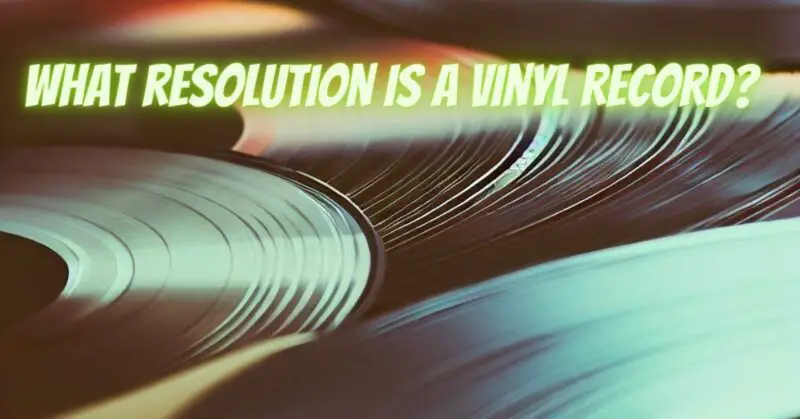Vinyl records have long been celebrated for their warm, analog sound and the tactile experience they offer to music enthusiasts. Unlike digital audio formats that use specific sample rates and bit depths to represent audio, vinyl records have their own unique resolution characteristics. In this article, we will explore the resolution of vinyl records, what it means, and how it compares to digital audio formats.
Understanding Vinyl Record Resolution
Unlike digital audio, which is represented as a series of discrete samples, vinyl records store audio information in the form of continuous analog waveforms. The resolution of a vinyl record is determined by several key factors:
- Groove Depth: The depth of the grooves on a vinyl record is a crucial aspect of its resolution. The stylus (needle) of the turntable’s cartridge tracks these grooves, and the depth variations in the grooves correspond to the audio signal. Deeper grooves can capture more significant amplitude variations, providing higher resolution.
- Groove Width: The width of the grooves also contributes to resolution. Wider grooves can accommodate more detailed waveform information, especially in the low-frequency range.
- Turntable Speed: The rotational speed of the turntable affects the linear speed at which the stylus moves through the grooves. Standard vinyl records are typically played at two speeds: 33 1/3 revolutions per minute (RPM) for LPs (long-playing records) and 45 RPM for singles. The higher the RPM, the greater the linear groove velocity, allowing for more detailed audio.
- Cartridge and Stylus Quality: The quality of the turntable’s cartridge and stylus significantly influences the ability to extract fine details from the grooves. High-quality cartridges and styluses can provide superior resolution.
- Mastering and Cutting Techniques: The vinyl mastering and cutting processes also impact the final resolution. Skilled mastering engineers and precise cutting techniques can optimize the resolution of the final record.
Comparing Vinyl Resolution to Digital Audio
Vinyl records offer a unique and characteristic sound that many listeners find appealing. However, it’s essential to recognize that vinyl resolution operates on different principles than digital audio. Here are some points of comparison:
- Analog vs. Digital: Vinyl records are an analog medium, capturing audio as continuous waveforms. In contrast, digital audio formats, such as CDs and MP3s, use discrete samples to represent audio.
- Dynamic Range: Vinyl records have limited dynamic range compared to high-resolution digital audio formats. Digital formats can represent a wider range of audio amplitudes.
- Frequency Response: Vinyl records have a characteristic frequency response, with some inherent limitations in the high and low-frequency ranges. Digital audio formats, especially high-resolution ones, can offer extended frequency response.
- Noise and Distortion: Vinyl records can introduce surface noise, pops, and crackles, which are not present in digital audio. However, these imperfections are often considered part of the vinyl experience.
Vinyl records have a unique resolution characteristic, capturing audio as continuous analog waveforms in grooves. While vinyl offers a distinct and beloved sound quality, it operates differently from digital audio formats in terms of dynamic range, frequency response, and noise characteristics. The appeal of vinyl lies not only in its resolution but also in the tactile experience and nostalgia it brings to music listening. Understanding the resolution of vinyl records helps us appreciate the artistry and craftsmanship that goes into creating and playing them.

